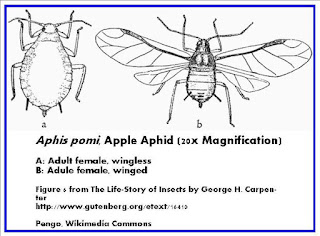Lemon Grass
stats/requirements at a glance
Ease of Raising:
|
5/5 – Very Easy, plant and
leave
|
Water:
|
4/5 – Daily
|
Sun:
|
5/5 – Full sun
|
Training:
|
1/5 – Minimal (3Ds: Dead,
damaged and diseased)
|
Fertilise/Feeding:
|
1/5 – Minimal (at least
during the growing season)
|
Time to Harvest:
|
2/5 – Soon, 1-2 months
after propagation
|
Frost Hardiness:
|
2/4 – Very tender (can’t cope
with light frost)
|
|
|
Uses:
|
Culinary & Medicinal
|
Most Problematic Nemesis:
|
Eggplant rust or Pearl
Millet rust, Puccinia substriata
|
Container Plant:
|
Yes
|
 |
Grasses, Gramineae
Handbuch der Systematischen Botanik
1924
Kurt Stoberts Online Library |
Quick intro
The first article on an ‘exotic’ herb features Lemon grass, a popular addition to Asian cuisine. Lemon grass imparts a lovely lemon flavour to any dish without any of the acidity of a lemon. The base of the stems are used in poultry, fish, beef and seafood dishes, whereas the leaves add a wonderful hint of lemon to tea, cool drinks and soups.
History
The main culinary lemon grasses have their origins in the Indo-Malayan ecozone, which includes India, Southeast Asia and southern China. There are many species of lemon grass found in Africa, Australia and the Middle East.
Science Stuff
Lemon grass belongs to the
Cymbopogon genus (isn’t that an awesome scientific name!?) from the Poaceae grass family. It is a member of the Andropogoneae or Sorghum tribe of grasses. Several species of lemon grasses are used for culinary purposes, essential oil production and perfumes. The two most popular species include;
 |
West Indian lemon grass,
Cymbopogon citratus |
1)
Cymbopogon citratus or West Indian lemon grass, is native to Malaysia, Indonesia and southern India. This species is more suitable to cooking.
2)
Cymbopogon flexousus or East Indian lemon grass, is native to India, Sri Lanka, Burma and Thailand. This species is more suitable for essential oil pressing.
Growing & Pruning Lemon Grass
Lemon grass is a tropical & subtropical perennial that will do very well in areas with hot & wet summers and mild, dry winters. Oil development and flavour depend on recieve a sufficient amount of sunlight. In cool climates, lemon grasses will go dormant, but remains evergreen during winters with temperatures above 10
oC (or 50
oF). It prefers a lot of water, but will suffer from root-rot if left in standing water for too long.
It does very well in both the garden and as a container plant. It can become a large monster in the garden, yet growth can be managed when it is planted in a container. A container grown plant will be easier to move indoors should very cold weather prevail (below 10
oC or 50
oF) or if frost threatens. Prolonged temperatures of below -2
oC (28.4
oF) will kill the plant as it is extremely cold-sensitive.
Other Tips
Always wear gloves when handling lemon grass! It has serrated leaves that do quite a bit of damage to unprotected hands!
Lemon grasses can become scruffy after a year of good growth as intense sunlight can cause the tips of the plant to tinge red, whereas some leaves die back in winter. Before spring arrives, don some gloves and grab a pair of scissors. Simply cut all the green leaves to 30 cm from the base of the plant and remove any dead leaves. Come spring the lemon grass will repay you with lush new growth.
 |
West Indian lemon grass,
Cymbopogon citratus |
Lemon grass is susceptible to Pearl Millet or Eggplant rust,
Puccinia substriata. It does not affect the growth or flavour of the plant that much, but it may be a source of infection for other plants, such as eggplant. I don’t bother with it as I don’t grow eggplant anymore, but should you wish to treat it organically, I did develop an environmentally-friendly fungicide against it – check out my
Eggplant Rust post or
Pest Control page.
 |
Pearl Millet or Eggplant rust,
Puccinia substriata,
on lemon grass, Cymbopogon citratus |
Harvesting & Storing
Newly purchased lemon grasses will only have a few clumps. Once it has grown to a decent size, which does not take very long considering it is a grass, you can start harvesting. Clumps are removed by grabbing it at the base of the stem and ripping out with a twisting motion. The leaves and roots are trimmed. The fleshy white part (lower 10 cm) is used for cooking after being bruised with a knife to release its flavour. You can keep the leaves for addition to more ‘liquid’ food preparations, such as teas, soups and cool drinks.
Lemon grass clumps can be stored in the fridge for about 3-5 days in a damped paper towel, but it is best used fresh for maximum flavour. Lemon grass can also be stored as chunks in the freezer.
Seed Saving & Propagation
Lemon grass is rarely raised from seed as it is so easy to propagate from stem cuttings (it is even easier than Basil!!!). When you do your winter pruning you can also reduce the size of your lemon grass by removing a few clumps. You can stick these into pots and they will make enough roots during the rest of winter to be transplanted by summer (if you rip out clumps with root intact it will speed up the process).
Garden and container plants will require splitting after several years of growth. Simply take a spade and split it into halves or quarters to be replanted elsewhere.
Lemon grass does produce flowers, but these are not commonly seen from cultivated specimens.
Something interesting: Lemon grass essential oil
The essential oil obtained from lemon grass has a wide range of uses. Teas made from fresh leaves are used as stomach and gut relaxants, whereas the oil is antiseptic, antifungal and deodorising. Poultices are used to treat arthritis and to ease pain. Rooms or areas treated with (I assume sprayed or smeared) lemon grass essential oil repels insects, such as flies and mosquitoes!
Reference:
Baldacchino, F., Tramut, C., Salem, A., Liénard, E., Delétré, E., Franc, M., Martin, T., Duvallet, G. & Jay-Robert, P. 2013: The repellency of lemongrass oil against stable flies, tested using video tracking. Parasite, 20, 21. doi:10.1051/parasite/2013021
My Lemon Grass
I have two plants, each two years old. They produce more than enough lemon grass for our family and have been a joy to keep as they are care-free additions to the edible garden.
______________________________________________________________________________
Please share with fellow gardening enthusiasts via the various sharing buttons at the end of posts/pages! Else you can vote for posts through the Google reactions bar at the end of articles. To stay up to date I have provided several reader and social networking platforms with which to subscribe: Twitter, Pinterest, RSS Feed Reader or Email/Follow directly using the Blog Followers widget on the left hand side toolbar. Thank you for reading and please feel free to ask if questions arise - I appreciate comments and ideas too! 😆
_________________________________________________________________________________


























